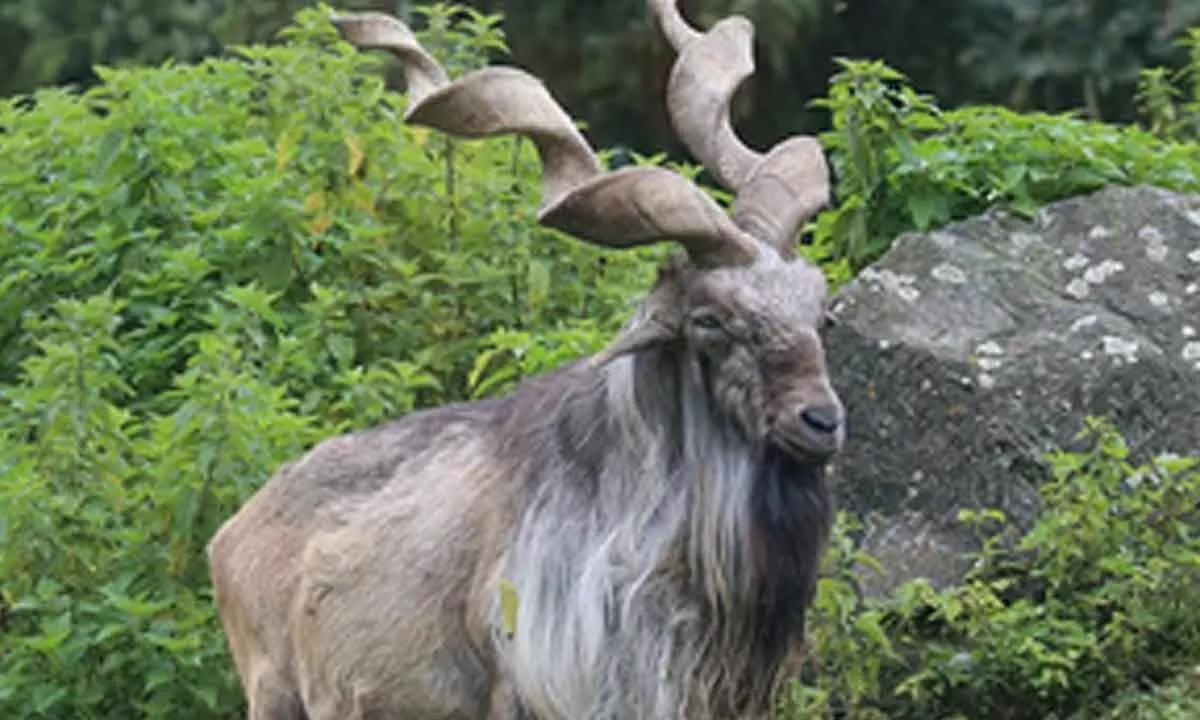Live
- Free online seminar on Cybersecurity Careers
- Coal mine tragedy: Navy divers return as pumping operations continue to rescue labourers
- Scholarships for Students
- Trinamool to expel leader arrested in Bengal councillor murder case
- We've got quality local & international players in SA20: League commissioner Graeme Smith
- Fake call centre busted in Gurugram, 11 arrested
- AAP, BJP spar over Jat quota; Kejriwal vows to fight only from one seat
- Delhi polls: BJP likely to announce 500 units of free power for temples, gurudwaras
- Jack Reacher Returns: Prime Video Drops Action-Packed Trailer for Season Three
- Choosing the Right Mask for Maximum Protection Against HMPV
Just In

A large wild Capra goat called Markhor was found on Saturday in Jammu & Kashmir’s Baramulla district. Officials of the Wildlife Protection Department started efforts to catch and relocate the rare animal.
Srinagar : A large wild Capra goat called Markhor was found on Saturday in Jammu & Kashmir’s Baramulla district. Officials of the Wildlife Protection Department started efforts to catch and relocate the rare animal.
Markhor (capra falconeri) is a large wild goat species native to South and Central Asia mainly Pakistan, the Karakoram mountain range, parts of Afghanistan and the Himalayas. It is listed on the IUCN red list as "near threatened" since 2015.
Villagers in Noorkha of Boniyar area in Uri tehsil of Baramulla district found the wild goat near a waterfall this morning.
The villagers promptly contacted the local police station and a team from Wildlife Protection Department came to capture and relocate the rare animal.
Villagers said that the wild goat is not found in the area and it has most likely crossed the line of control (LoC) from Pakistan and entered Baramulla district.
Markhor is the national animal of Pakistan where it is commonly called the screw-horned goat. The word ‘Markhor’ comes from Pashto and classical Persian language which means snake-eater.
It refers to an ancient belief that the Markhor kills and eats snakes. The regional myth is believed to owe its origin to the snake-like horns of the male Markhor goat.
Alos in folklore, the Markhor is believed to kill and eat serpents. Thereafter, while chewing the cud, a foam-like substance comes out of its mouth that drops on the ground and dries. This foam-like substance is sought after by the local people, who believe that it is useful in extracting poison from snakebites.
United Nations General Assembly has declared May 24 as the International Day of the Markhor.
Markhor are adapted to mountainous terrain and can be found between 2,000 to 11,800 feet altitude.
The animal inhabits shrub forests made up primarily of oaks, pines and junipers. They are diurnal in behaviour, which means they are active mostly in the early morning and late afternoon.
Their mating season is during winter when the males fight each other by lunging, locking horns and attempting to push each other off balance.
Their gestation period lasts 135-170 days and usually results in the birth of one or two offspring, but occasionally three.
Markhors live in herds, usually numbering nine animals, composed of adult females and their young ones. Adult males are largely solitary.
Adult females and fawns comprise most of the markhor population, with adult females making up 32 per cent and kids making up 31 per cent . Adult males comprise 19 per cent of the population.
Their alarm call closely resembles the bleating of domestic goats. During summer, the males remain in the forest while the females generally climb to the highest rocky ridges.
In spring time, the females stay closer to cliffs in areas with more rock coverage to provide protection to their offspring. The males stay in higher elevated areas with more access to vegetation for foraging so as to improve their body condition.

© 2025 Hyderabad Media House Limited/The Hans India. All rights reserved. Powered by hocalwire.com






